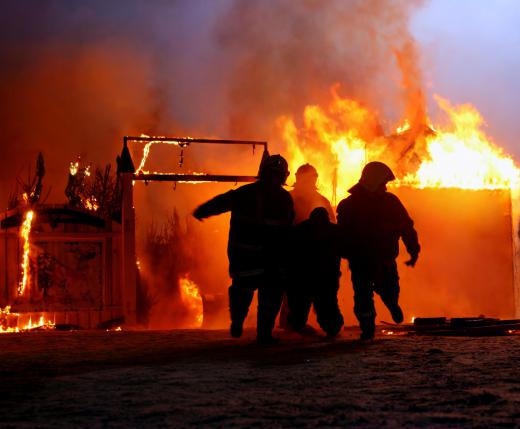Fire resistant fabric, also commonly called fire retardant fabric, is a kind of textile that is more resistant to fire than others. Fire resistant fabric becomes resistant either through chemical treatment of its fibers or because its fibers are specifically manufactured to be resistant to fire.
It is important to note that neither “fire resistant” nor “fire retardant” mean “fire proof.” Although these fabrics may have a slower burning rate than others, it is still possible for them to burn. Furthermore, it is most likely that they will be damaged if they are exposed to fire and high temperatures for a long enough period of time. The purpose of these fabrics is to reduce the spread of a fire, not to preserve the fabric itself.

It is possible to use natural fibers to create fire resistant fabric. Cotton, for example, can be treated with a chemical that reduces its flammability. The chemical that is topically applied to reduce the flammability of a fabric will react with the tars and gases that are naturally produced by the fabric. When the chemical reacts with these tars and gases, it causes the fabrics to char instead of combust.

Different fire retardant fabrics have different levels of durability when exposed to heat and flame. Normally, fabrics that are manufactured to be fire resistant are more durable under such conditions than natural fibers that are simply treated with chemicals to make them fire resistant. Polyester, for example, can be manufactured so that fire resistant properties are built into the structure of the fibers themselves.
One of the reasons that manufactured fire resistant fabrics are considered to be more effective at retarding fire than topically treated fabrics may lose their ability to resist fire over the course of time. This is especially true for fabrics that are regularly laundered.
One of the most common uses of fire resistant fabric is in the suits that fire fighters wear. These suits are usually made of the most durable fire resistant fabrics that are available, including cutting-edge fabrics that have fire resistant propertied built into the molecular structure of the fibers. Not only do these fabrics have to resist fire, but it is also important that they don’t char and thin when they are exposed to heat and flames. Furthermore, it is important that these fabrics conduct as little heat as possible so as to protect the firefighter from the high temperatures of a fire.
